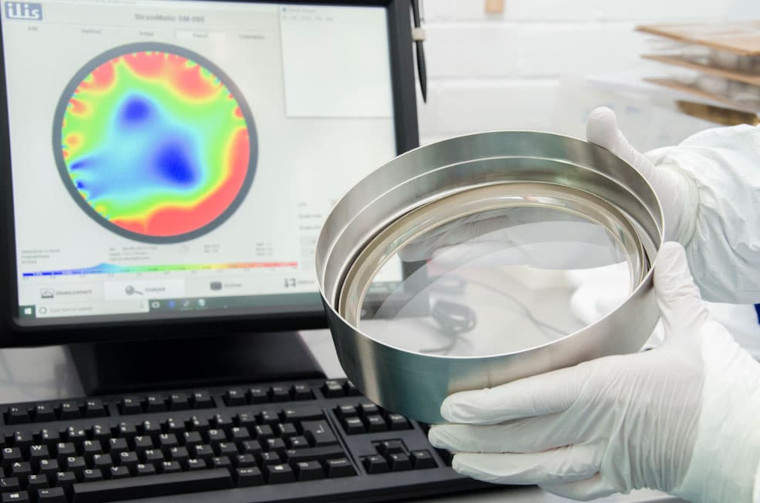Diffusion bonding
Diffusion bonding involves the joining of parent materials, below their melting point, by heating and applying force in a clean vacuum environment.
Overview
Interlayer diffusion bonding involves the joining of parent materials, below their melting point, by using a metallic interlayer which deforms under heat and pressure in a clean vacuum environment. We have developed this method, with an aluminium interlayer, to produce low-distortion viewports due to the relatively low processing temperatures involved (~500C).

Benefits
Process benefits of interlayer diffusion bonding include:
- consistency – the furnace environment and process are automated
- low distortion – the low process temperature minimises the effect of differential expansion in dissimilar joints producing joints of very low stress
- versatility – Al interlayers can produce diffusion bonded joints with much lower requirements on surface finish and flatness compared to parent-parent diffusion bonding
- rework – aluminium bonds can be dissolved to recover and re-bond valuable component materials such as diamond and sapphire (often used in specialist viewports)
Bonding design
Successful bonding design depends upon:
- joint geometry, surface finish
- choice of parent material and interlayer
- planning for furnace tooling
We develop novel diffusion bonded solutions for fusion challenges, but also supply components to semiconductor, quantum, and metrology customers.
Diffusion-bonded components made by our team have operated successfully for decades as a safety-critical boundary in the JET fusion reactor and are now being qualified for the same use in the larger ITER fusion reactor. Our team has a wealth of experience in qualifying novel processes for use in stringent regulatory regimes.
For best results contact us at the earliest stage of design.